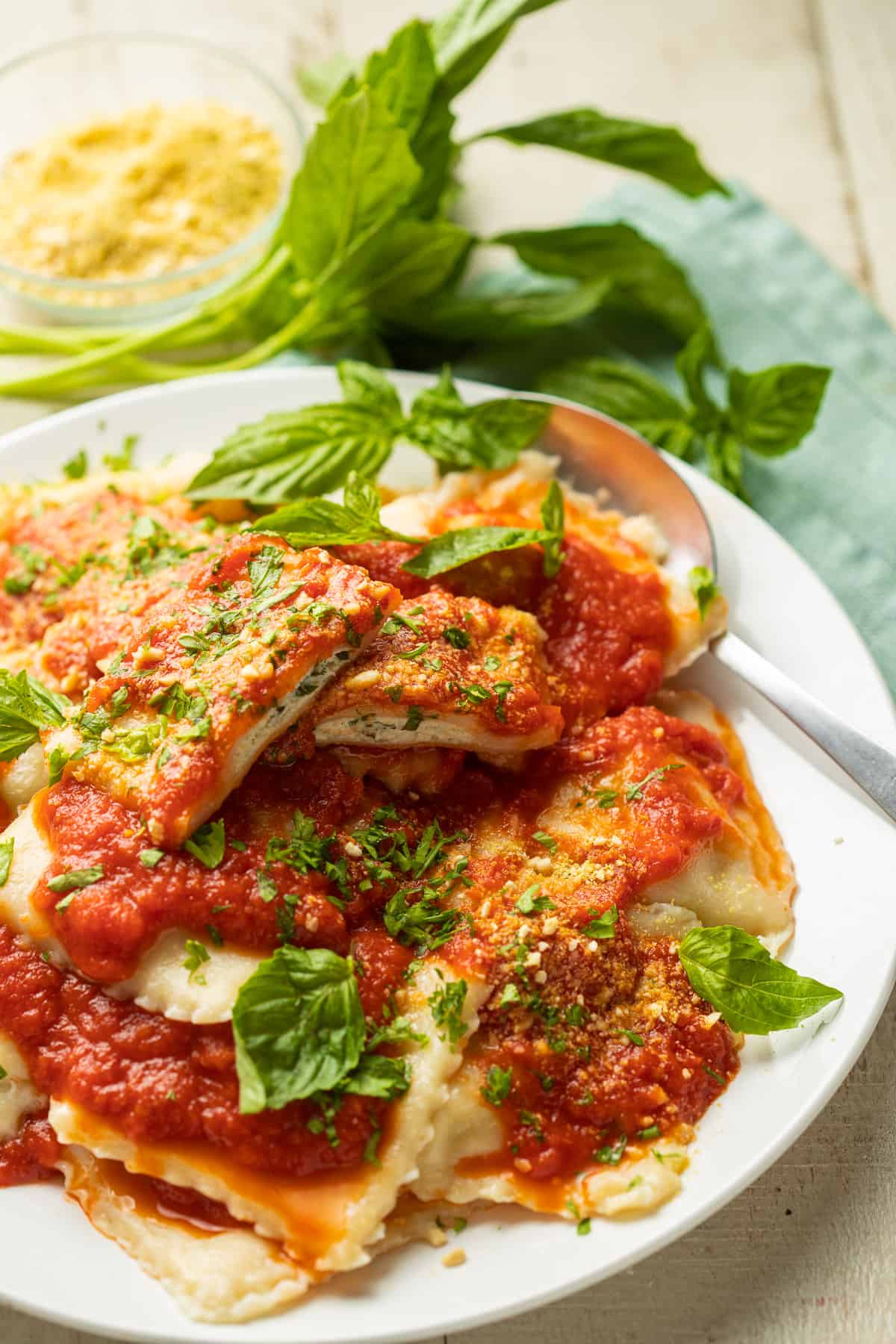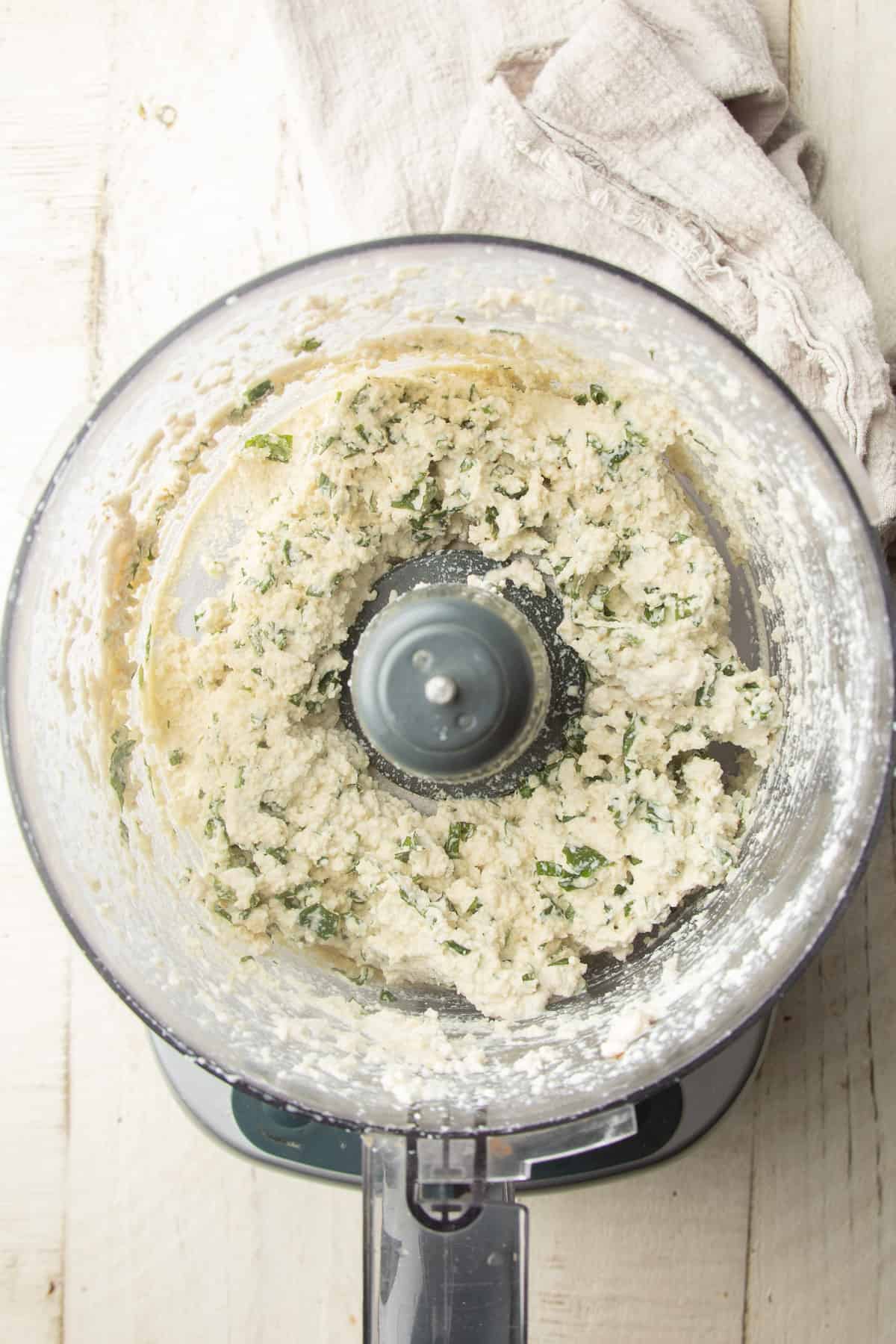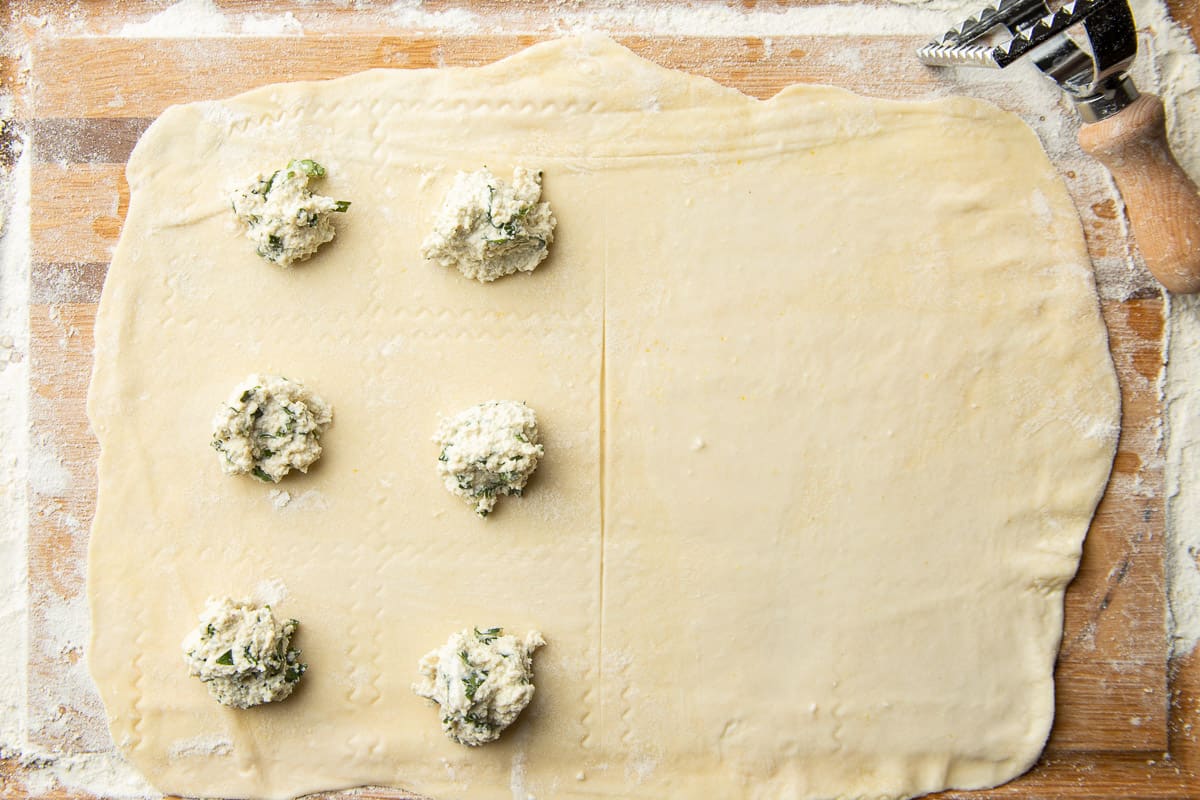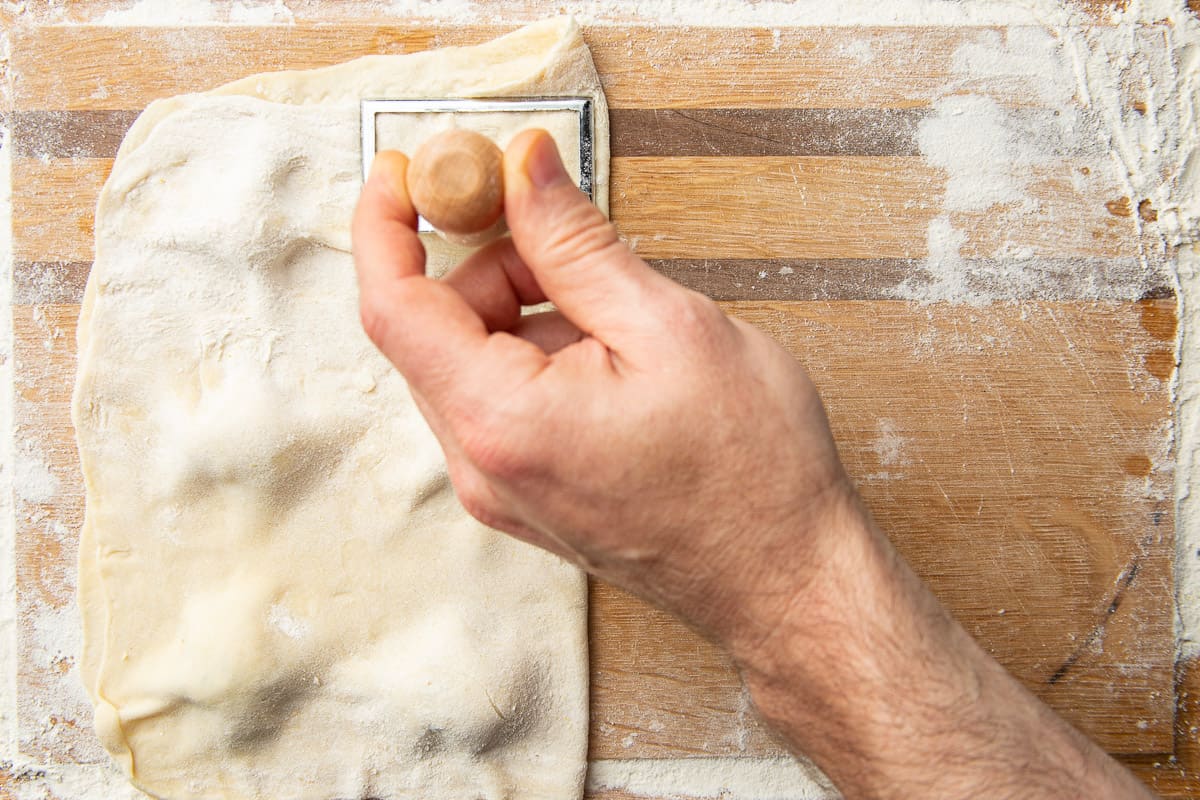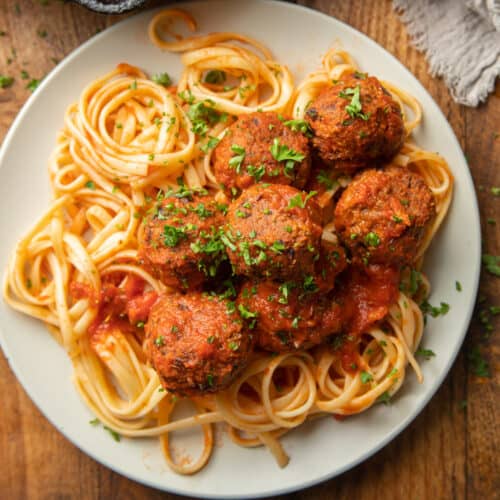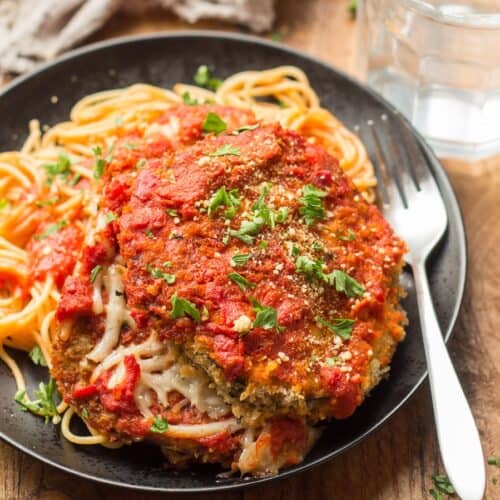Cheese ravioli with tomato sauce was so my jam when I was growing up. There’s so much to love about those little pockets of deliciousness. It occurred to me recently that vegan ravioli might be a fun dish to tackle for this site. I’ve made vegan pasta dough before, and I’ve got a killer recipe for vegan ricotta cheese. So why not put those components together? That’s what I did, and the results were delicious! With the fresh dough and fillings, these ravioli turned out even more delicious than the frozen ones I enjoyed growing up. I also found vegan ravioli to be not all that difficult to make, although I will warn you that the dish is time consuming. But also fun! And the results are well worth the effort.
Ingredients You’ll Need
Flour. The recipe calls for all-purpose wheat flour. I’ve also tried using a 50/50 mix of all-purpose and whole wheat pastry flour, which worked but made the dough a tad more challenging to work with.Salt.Water.Olive oil. Raw cashews. Your cashews must be raw in order for the filling to have the right flavor and texture. Roasted cashews will make it taste nutty, which is not what we’re going for. You’ll be soaking your cashews in water in advance to soften them up so they’re blendable.Garlic.Non-dairy milk. Use a variety that’s unsweetened and unflavored, such as almond milk, cashew milk, or soy milk.Lemon juice. Use freshly squeezed juice for the best flavor.Tofu. Use firm or extra-firm tofu that’s been drained. No need to press it!Fresh basil.Black pepper.Cornmeal.Sauce of choice. Try serving your vegan ravioli with marinara sauce, white wine sauce, vegan vodka sauce, pomodoro sauce, or simply some melted vegan garlic butter.
How They’re Made
The following is a detailed photo tutorial on how to make this dish. Scroll all the way down if you’d like to skip right to the recipe!
To make your dough, first combine the flour and salt in a large mixing bowl, then add water and olive oil.Stir the mixture together to form a dough.
Knead the dough on a lightly floured surface for about 5 minutes, until it becomes smooth and elastic. The dough will be pretty dense and tough at this stage.Place the dough into an oiled mixing bowl and cover it with a damp kitchen towel. Let it rest for 30 minutes. This step is important, as it lets the gluten relax so the dough will be more workable.
Make the filling while the dough rests. First place your soaked cashews into a food processor bowl along with garlic, non-dairy milk, lemon juice and salt. Blend everything until the mixture is relatively smooth.Break your tofu into chunks and add them to the food processor bowl, along with chopped fresh basil and black pepper. Pulse the machine until the ingredients are well-mixed, but a tad chunky, like ricotta cheese.
Once your dough has finished resting, divide it into four pieces and roll each one into a ball. Set one of your dough balls on a lightly floured surface and return the others to the bowl, keeping them covered with your kitchen towel.Roll the dough into a rectangle, sizing it so that you could could stamp your ravioli cutter in three rows of four over the top surface of the dough. I’m using a 3-inch square ravioli cutter, so my dough is rolled to just larger than 12 inches by 9 inches. Use a knife to score your rectangle, dividing it in half width-wise. Place dollops of about 1 ½ teaspoons evenly spaced over one side of the rectangle.
Tip: Use your ravioli stamp to make a slight imprint showing you where each ravioli will be cut. This will help you to properly place your filling and ensure that your dough is rolled out to a large enough area.
Use a little water to lightly moisten the dough surrounding each dollop of filling, then fold the other half of the dough over the half with the filling on it. Press the dough to seal it around the filling and try to work out any air bubbles.Use a ravioli stamp to cut your ravioli around the filling pockets.
Tip: A pizza cutter or large knife can be used if you don’t have a ravioli cutter.
Arrange the ravioli on a baking sheet coated with cornmeal as you cut them, then sprinkle some cornmeal on top and cover them with a damp towel as you continue to fill and cut more ravioli.
Tip: Don’t skip the cornmeal! It will prevent the ravioli from sticking to the baking sheet and towel.
Once all of your vegan ravioli are made, you can boil them. Use a large pot of salted water, and only boil them for 2 to 3 minutes, until all of them float.
Tip: A few of your ravioli may start to float immediately. This probably means they’ve got air bubbles inside. Be sure to let them continue cooking for the full amount of time.
Drain your cooked ravioli, then serve them with your favorite pasta sauce. I like to also sprinkle mine with vegan Parmesan cheese.
Leftovers & Storage
Once they’re fully cooked, your vegan ravioli will keep in an airtight container in the fridge for about 3 days, or in the freezer for 3 months. Make sure to either store your ravioli in sauce or with a bit of olive oil to prevent them from sticking to each other. You can also store uncooked fresh vegan ravioli in an airtight container in the refrigerator for about 3 days. Separate individual ravioli with parchment paper to prevent them from sticking to each other.
More Vegan Italian Recipes
Like this recipe? If so, please stop back and leave me a review and rating below if you try it! Also be sure to follow me on Facebook, Pinterest or Instagram, or subscribe to my newsletter for more recipes like this one!
